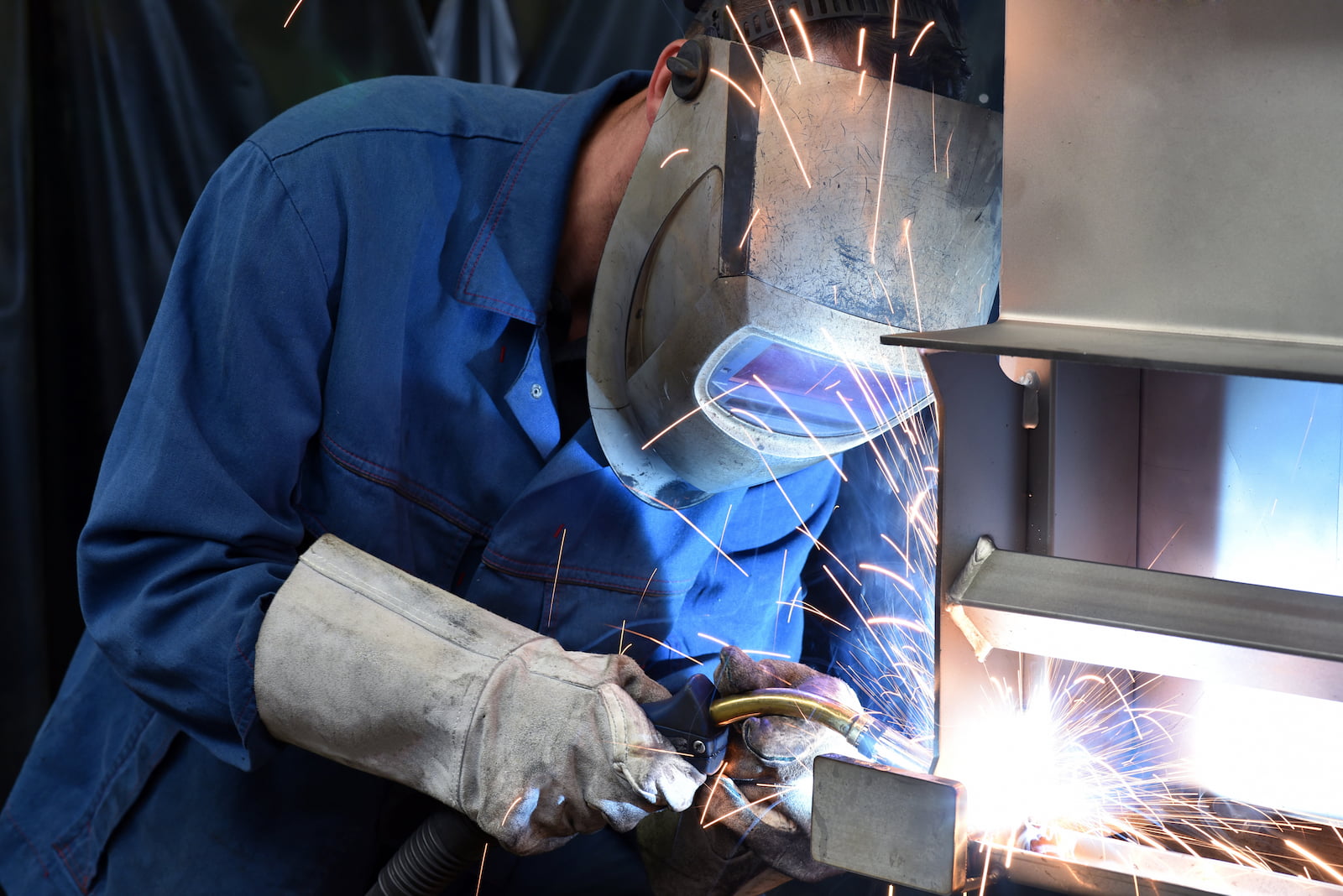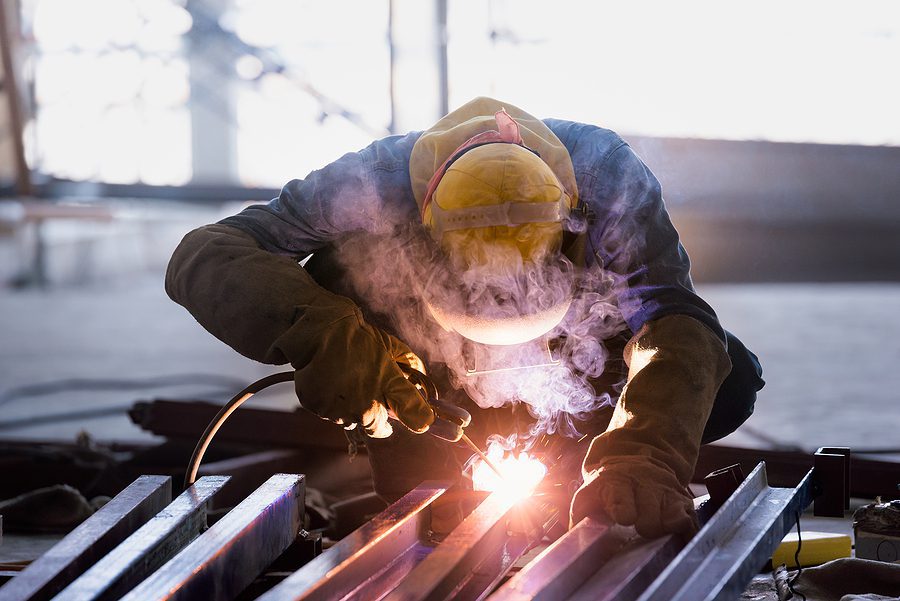All About Welding: Key Insights Into Techniques and Best Practices for Success
Welding includes a selection of strategies, each suited for particular products and applications. Understanding these approaches, such as GMAW, SMAW, and TIG, is necessary for attaining suitable results. The ideal tools and safety techniques can not be forgotten. As prep work and repairing play crucial roles in the welding process, grasping these aspects can significantly improve the top quality of the final product. What are the key aspects that assure a successful weld?
Recognizing Different Welding Strategies
Welding techniques include a range of techniques, each matched to specific applications and products. Among one of the most usual methods are Gas Metal Arc Welding (GMAW), Protected Metal Arc Welding (SMAW), and Tungsten Inert Gas Welding (TIG) GMAW, likewise referred to as MIG welding, is preferred for its speed and adaptability, making it suitable for thin materials. SMAW, or stick welding, is preferred for its simpleness and effectiveness in outdoor settings, specifically with thicker steels. TIG welding supplies precision and control, making it ideal for complex work and non-ferrous steels (Fabrication). Each technique has its special benefits and factors to consider, permitting welders to select the very best technique based upon the task's requirements, product type, and preferred end results. Understanding these strategies is necessary for successful welding
Necessary Welding Equipment and Devices
While numerous welding methods need particular skills, the right tools and devices are similarly crucial for achieving high quality results. Vital welding devices includes welding equipments, which differ depending upon the method-- such as MIG, TIG, or stick welding. Safety equipment, consisting of aprons, headgears, and handwear covers, guarantees security and convenience during the procedure. Furthermore, fixtures and clamps aid protect materials in position, making sure accuracy in welds. Consumables like welding rods, cable, and shielding gas are likewise vital parts that affect the quality of the weld. Moreover, devices such as cutters and mills promote surface preparation and post-weld finishing, adding to an expert outcome. Buying top quality devices eventually boosts the performance and efficiency of welding projects.
Security Practices in Welding
Appropriate safety techniques are crucial in the welding sector to safeguard employees from possible dangers. Welders must use appropriate individual protective devices (PPE), including helmets with appropriate shading, gloves, and flame-resistant apparel. Adequate ventilation is vital to decrease exposure to dangerous fumes and gases generated throughout the welding process. Additionally, employees ought to be educated in the right handling of welding equipment to protect against crashes. Fire precaution, such as keeping combustible materials far from the welding location and having fire extinguishers readily offered, are necessary. Regular evaluations of devices and work spaces can aid recognize prospective threats prior to they bring about mishaps. By adhering to these safety methods, welders can produce a more secure working environment and decrease risks related to their trade.
Preparing Materials for Welding
Preparing products for welding is a crucial step that substantially influences the high quality and integrity of the final item (Welding). Correct prep work entails cleaning up the surfaces to remove impurities such as dirt, oil, and rust, which can jeopardize the weld. Techniques such as grinding, sanding, or utilizing solvents are commonly used to attain a tidy surface. Furthermore, ensuring that the materials mesh comfortably is crucial; voids can result in weak welds. It's likewise essential to consider the placement and positioning of the elements, as this will certainly influence the ease of welding and the final result. Choosing the suitable filler product and making certain compatibility with the base metals is important for achieving strong, sturdy welds.
Tips for Getting High-Quality Welds
Attaining high-grade welds requires focus to information and adherence to best practices throughout the welding procedure. Correct joint prep work is vital, making certain surfaces are clean and totally free from pollutants. Picking the proper filler material and welding technique based upon the base steels is vital for excellent bonding. Preserving regular traveling rate and angle while welding can prevent flaws and promote harmony. Furthermore, managing heat input is crucial; excessive warmth can bring about warping and damaged joints. If necessary, frequently examining the welds throughout the process permits for prompt modifications. Lastly, using appropriate post-weld therapies, such as cleansing and stress and anxiety relief, can improve the longevity and integrity of the weld, eventually making certain an effective outcome.
Repairing Common Welding Issues
Welding usually presents challenges that can affect the top quality and stability of the final product. Typical problems such as porosity, inconsistent weld beads, and getting too hot can arise, each calling for specific troubleshooting methods. Recognizing these issues is important for welders to boost their skills and accomplish ideal outcomes.
Porosity Problems Described
Although porosity can frequently be neglected, it continues to be a crucial concern in welding that can compromise the integrity of a finished item. Porosity refers to the existence of little gas pockets within the weld grain, which can lead and damage the joint to premature failure. This issue commonly emerges from pollutants, wetness, or incorrect protecting gas coverage during the welding process. To reduce porosity, welders need to confirm that the base products are dry and clean, make use of proper protecting gases, and keep regular welding parameters. Frequently examining the tools and environment can also aid recognize prospective problems prior to they show up in the click for more info weld. Attending to porosity efficiently is essential for achieving strong, durable welds that meet quality criteria.

Inconsistent Weld Beads
Inconsistent weld grains can significantly affect the quality and toughness of an ended up product. Different aspects contribute to this concern, including inappropriate traveling rate, incorrect amperage settings, and irregular electrode angles. When the welder relocates too rapidly, a grain might show up slim and lack penetration, while moving as well gradually can cause extreme buildup. In addition, using the incorrect amperage can result in either undercutting or extreme spatter, both of which compromise weld stability. The welder's method, such as inconsistent lantern activity, can likewise lead to uneven bead look. To alleviate these problems, welders ought to concentrate on keeping steady, regulated motions and guaranteeing correct devices setups to attain harmony in their welds. Uniformity is crucial to achieving dependable and click to read more solid welds.
Overheating and Warping Issues
Too much warm throughout the welding process can bring about considerable getting too hot and buckling issues, affecting the architectural stability of the work surface. These problems often materialize as distortion, which can endanger positioning and fit-up, making further assembly challenging. Aspects adding to overheating include the selection of welding parameters, such as voltage and take a trip speed, as well as the kind of product being bonded. To minimize these issues, welders must keep constant travel speed and appropriate warm input while monitoring the work surface temperature. In addition, pre-heating or post-weld warm treatment can assist relieve stress and anxieties triggered by fast cooling - Belgrade. Regular assessment and adherence to finest techniques are essential in protecting against getting too hot and guaranteeing the durability and reliability of welded structures
Often Asked Concerns
What Are the Job Opportunities in the Welding Sector?
The welding sector uses varied career opportunities, consisting of positions as welders, assessors, educators, and webpage designers. Specialists can work in manufacturing, construction, aerospace, and automobile sectors, gaining from solid demand and affordable incomes in different duties.
Just How Can I Enhance My Welding Rate Without Giving Up High Quality?
To boost welding rate without giving up high quality, one should exercise efficient techniques, preserve tools, maximize setups, and boost hand-eye coordination. Normal training and looking for feedback can likewise considerably add to accomplishing quicker, premium welds.
What Certifications Are Available for Welders?
Many qualifications exist for welders, including those from the American Welding Culture (AWS), the National Center for Building And Construction Education and Research Study (NCCER), and various industry-specific organizations. These credentials boost employability and demonstrate ability effectiveness.
Just How Does Welding Impact the Residences of Metals?
Welding affects the homes of steels by modifying their microstructure, which can cause changes in ductility, solidity, and toughness. Warmth input and cooling rates during the process considerably influence these material characteristics.
Can I Weld Dissimilar Metals With Each Other?
